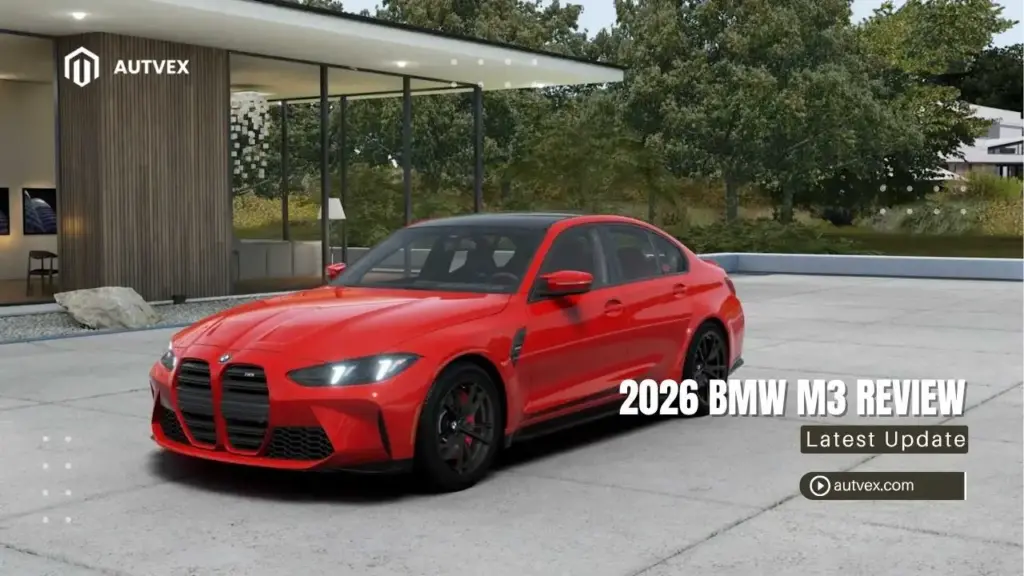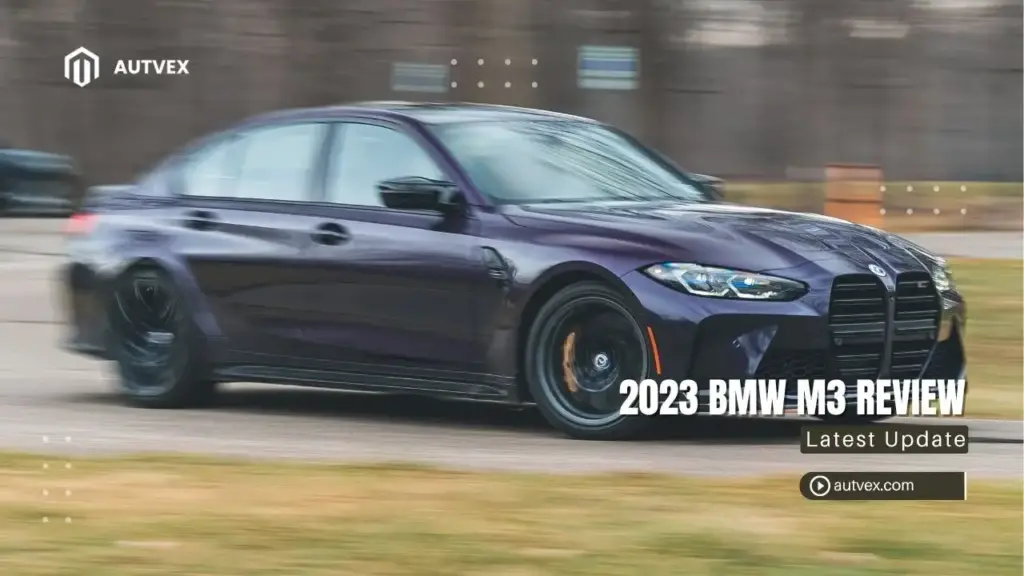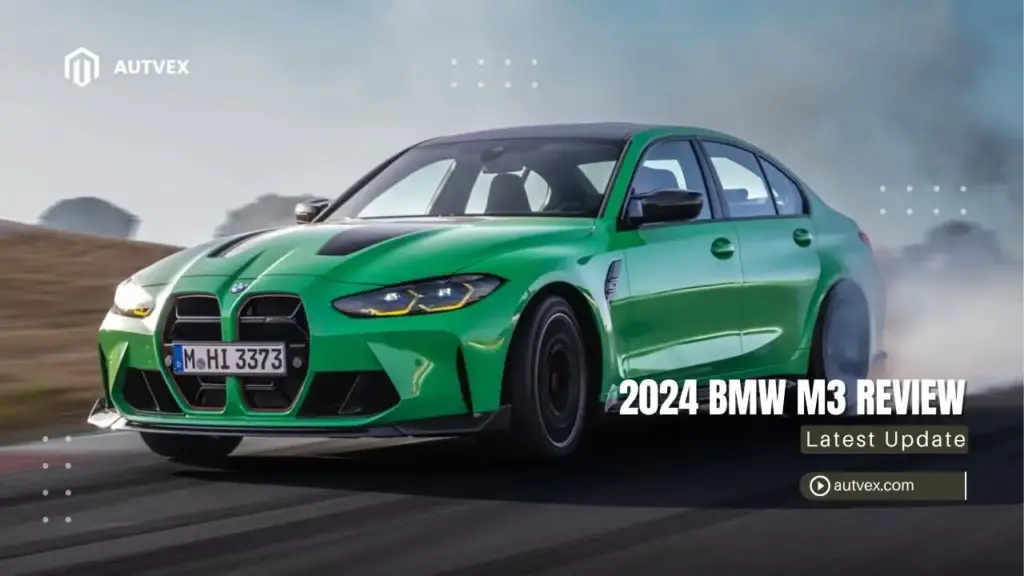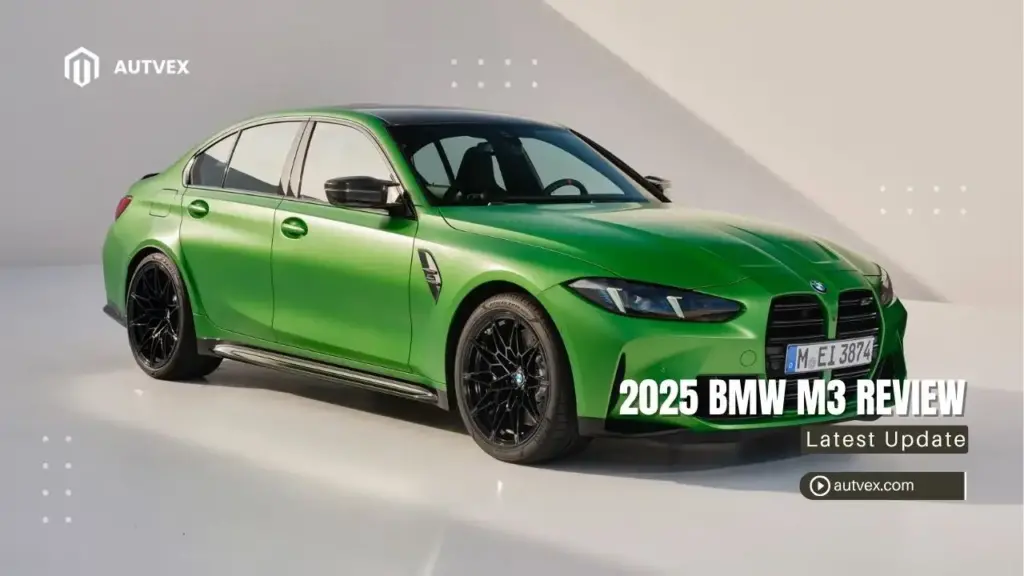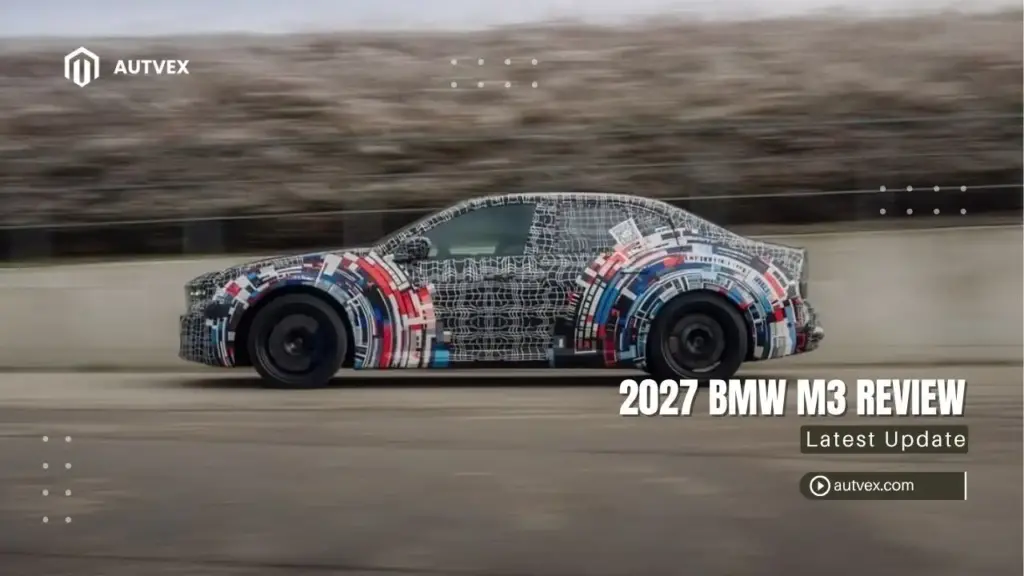You may also like:
The 2026 BMW M3 remains an exceptional performance sedan, delivering explosive acceleration and athletic handling wrapped in a premium package. With up to 523 horsepower from its twin-turbocharged inline-six engine, the M3 continues to define the compact luxury sports sedan segment[1]. For 2026, the M3 sees minimal changes but gains a heated steering wheel and remote engine start as standard features, potentially marking the final year before BMW’s radical 2027 Neue Klasse platform redesign[2]. Starting at $79,575 for the manual base model and reaching $88,875 for the all-wheel-drive Competition xDrive variant, the M3 offers multiple configurations to satisfy both driving purists and all-weather performance seekers[1].
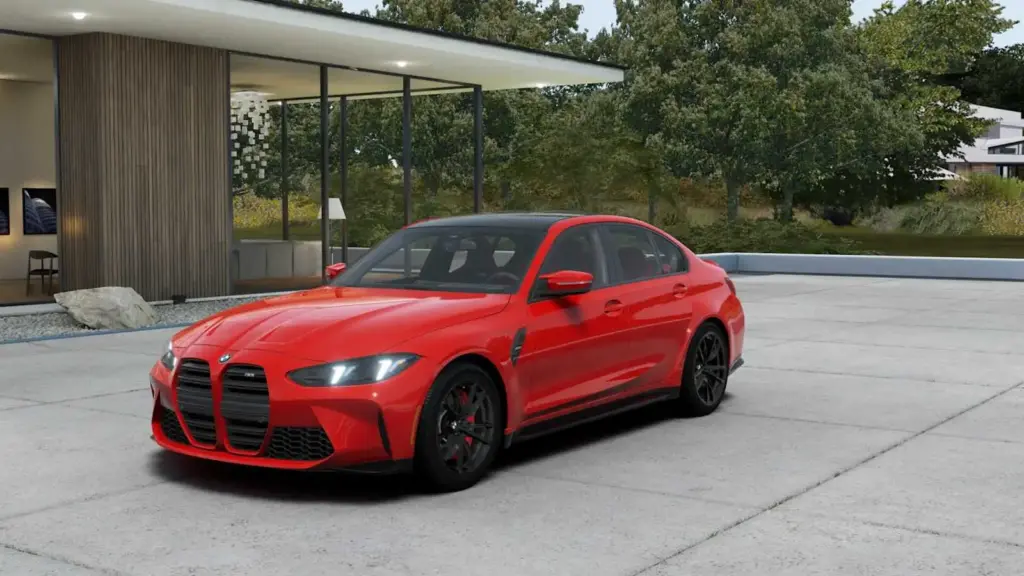
What Makes the 2026 BMW M3 Special
Overview and What’s New for 2026
The 2026 BMW M3 carries over virtually unchanged from the 2025 model year, maintaining its status as part of the seventh-generation 3-Series platform that debuted in 2019[2]. BMW added several comfort-oriented features as standard equipment, including a heated steering wheel and remote engine start—amenities that enhance daily usability without compromising the car’s performance credentials.
The Executive Package receives updates with galvanic controls and a power tailgate, adding convenience for buyers seeking luxury alongside performance[2]. BMW also expanded Individual paint color options through the online configurator, granting enthusiasts access to heritage M3 shades like Laguna Seca Blue, Dakar Yellow, and Techno Violet Metallic[3].
2026 Updates:
- Heated steering wheel now standard across all trims
- Remote engine start included
- Executive Package adds galvanic controls and power tailgate
- Expanded Individual color options in configurator
- Likely final model year before 2027 platform redesign
This status as potentially the last year of the current generation adds significance for buyers. The upcoming 2027 BMW M3 will transition to the Neue Klasse platform with both electric and hybrid powertrains, meaning 2026 represents the final opportunity to purchase a purely combustion-powered M3 generation[4].
The M3 Legacy and Market Position
Since its introduction in 1986, the BMW M3 has defined what a performance sedan should be: explosive power combined with everyday practicality. The current G80 generation continues this four-decade tradition, delivering supercar-rivaling acceleration in a package that accommodates four adults and a week’s worth of luggage.
According to Autvex automotive analysts, the M3 holds benchmark status in the compact luxury performance segment, consistently outperforming competitors in driving dynamics while maintaining superior daily usability compared to dedicated sports cars. The M3’s ability to transition seamlessly from track toy to daily commuter represents its core value proposition—no other sedan in this price range offers comparable versatility[5].
The car’s market positioning places it squarely between exotic sports cars and mainstream luxury sedans. At $80,000-$90,000, the M3 delivers performance matching vehicles costing twice as much while providing practical transportation that six-figure supercars cannot match.
Who Should Consider the 2026 M3
The 2026 BMW M3 appeals to several distinct buyer profiles:
- Manual Transmission Enthusiasts: The base M3 with its six-speed manual transmission represents an increasingly rare offering. As BMW and other manufacturers shift toward automatics and electrification, the 2026 M3 may be among the last opportunities to purchase a new, high-performance manual transmission sports sedan from a major manufacturer[6].
- All-Weather Performance Seekers: Buyers in northern climates benefit from the Competition xDrive’s intelligent all-wheel-drive system, which provides confidence-inspiring traction during winter months without sacrificing the M3’s dynamic character.
- Last-Generation Collectors: Enthusiasts seeking the final non-hybrid M3 generation should act now. The 2027 redesign brings electrification, new styling, and uncertain manual transmission availability[4].
- Track Day Regulars Who Need Daily Transportation: Few vehicles match the M3’s dual nature. It delivers legitimate track capability with fade-resistant brakes and adjustable suspension while maintaining comfortable ride quality and practical cargo space for daily errands.
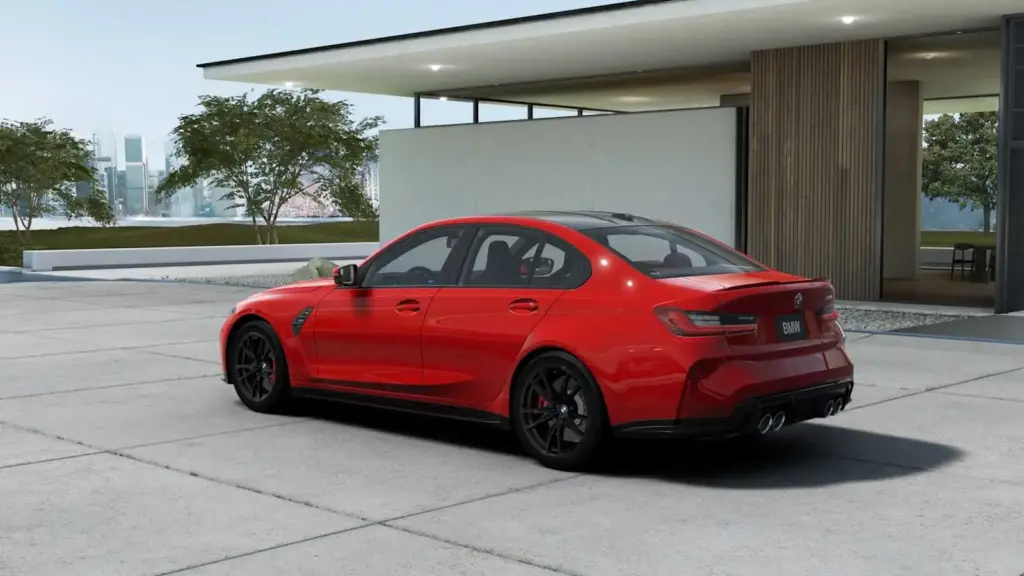
2026 BMW M3 Engine & Powertrain Options
S58 Twin-Turbocharged Inline-Six Specifications
The heart of every 2026 M3 is BMW’s masterful S58 engine—a 3.0-liter twin-turbocharged inline-six that showcases the company’s decades of inline-six development expertise. This powerplant features BMW M TwinPower Turbo technology with two mono-scroll turbochargers, direct fuel injection, Double-VANOS variable valve timing, and Valvetronic variable valve lift[1].
| Trim Level | Horsepower | Torque | Redline | Transmission | 0-60 MPH |
|---|---|---|---|---|---|
| Base M3 | 473 hp | 406 lb-ft | 7,200 rpm | 6-speed manual | 4.1 seconds |
| M3 Competition RWD | 503 hp | 479 lb-ft | 7,200 rpm | 8-speed automatic | 3.8 seconds |
| M3 Competition xDrive | 523 hp | 479 lb-ft | 7,200 rpm | 8-speed automatic | 3.4 seconds |
The S58’s linear power delivery ensures usable performance throughout the rev range, with maximum torque arriving at just 2,650 rpm and holding through 6,130 rpm. The engine’s free-revving nature—a characteristic of BMW inline-sixes—encourages spirited driving, with a 7,200 rpm redline that feels eager rather than strained[1].
Unlike turbocharged engines that deliver aggressive low-end punch followed by power fade, the S58 maintains progressive acceleration through its entire powerband. This characteristic makes it easier to modulate throttle inputs during track driving while providing explosive performance when unleashed.
Transmission Choices: Manual vs Automatic
BMW offers two distinct transmission experiences, each targeting different buyer priorities. The six-speed manual transmission comes exclusively on the base M3 with rear-wheel drive, offering engagement that automatic transmissions cannot match[1]. The clutch pedal provides excellent feedback with moderate effort—neither too light nor excessively heavy—while the shifter delivers mechanical precision with short throws and positive gate engagement.
Edmunds testers note that the manual M3 provides the best ride quality in the lineup, as the base suspension tuning prioritizes compliance over the Competition variant’s track-focused stiffness[7]. This makes the manual M3 particularly appealing for daily driving scenarios where comfort matters more than maximum cornering grip.
The eight-speed M Steptronic automatic transmission (standard on Competition models) delivers lightning-quick shifts that manual gearboxes cannot match. In automatic mode, the transmission anticipates driver intentions, downshifting aggressively under braking for corner entry. Manual mode via steering wheel paddles provides complete control, holding gears to redline when desired[1].
Car and Driver testing revealed the automatic M3 Competition achieves significantly quicker acceleration times than the manual—3.8 seconds to 60 mph versus 4.1 seconds—though purists argue the manual offers greater driver satisfaction despite the performance disadvantage[1].
Drivetrain Configurations
The M3’s drivetrain options cater to different driving preferences and climate requirements. Rear-wheel drive (available on Base and Competition models) provides the traditional M3 experience: balanced handling with rotation-friendly oversteer characteristics that skilled drivers can exploit. The rear-drive configuration maintains purity of feel, communicating road surface information more directly than all-wheel-drive systems[7].
The xDrive all-wheel-drive system (exclusive to Competition xDrive) transforms the M3’s capability envelope. BMW engineered this system with rear-wheel bias, sending most power rearward under normal conditions while redirecting torque forward when rear traction becomes saturated. The system includes a 2WD mode that completely disables front power delivery, effectively converting the xDrive M3 into a rear-drive machine for enthusiast driving[1].
The Active M Differential (standard on Competition, optional on Base) optimizes power distribution between rear wheels during cornering. This electronically controlled limited-slip differential can vary locking force from 0-100% based on driving conditions, maximizing corner exit acceleration by preventing inside wheel spin[1].
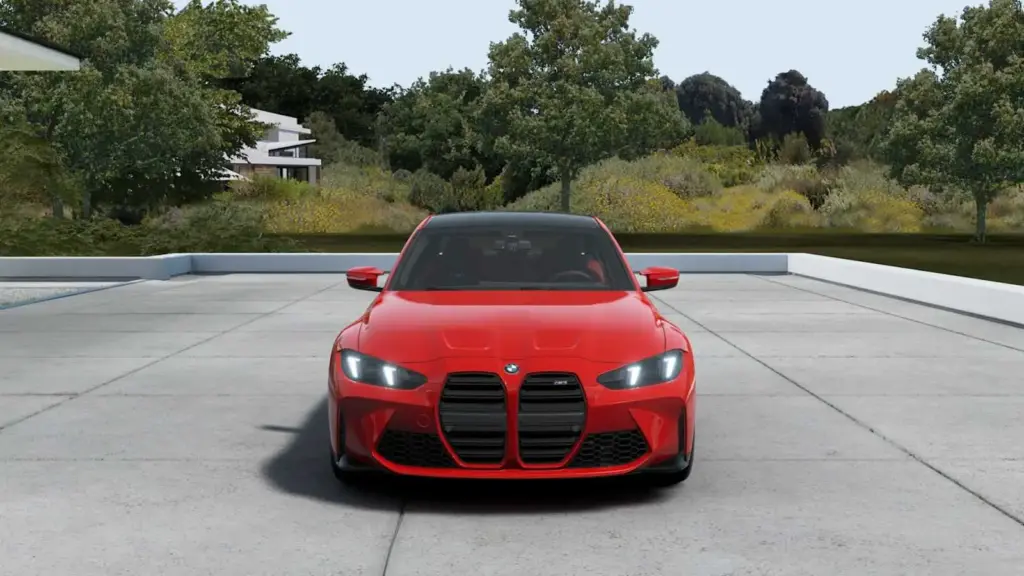
2026 BMW M3 Performance & Acceleration
0-60 MPH Times and Quarter-Mile Performance
The 2026 BMW M3 delivers acceleration that legitimately rivals dedicated sports cars costing significantly more. Car and Driver’s testing produced remarkable results, with the Competition xDrive achieving 0-60 mph in just 2.8 seconds—faster than the EPA estimate and competitive with supercars like the Porsche 911 and Chevrolet Corvette[1].
Tested Acceleration Performance:
- Base M3 Manual RWD: 3.9 seconds (Car and Driver tested)
- M3 Competition RWD: 3.8 seconds (official estimate)
- M3 Competition xDrive: 2.8 seconds (Car and Driver tested)[1]
The xDrive system’s traction advantage becomes immediately apparent during launch. While rear-drive models experience wheel spin despite electronic aids, the xDrive variant launches with authority, converting all 523 horsepower into forward motion with minimal drama. Quarter-mile times reflect similar advantages, with the xDrive covering the distance in approximately 11 seconds flat.
Top speed reaches an electronically limited 155 mph across all variants. The optional M Driver’s Package ($2,500) raises this limit to 180 mph, though accessing such velocities requires track environments. Buyers considering BMW’s performance lineup will find the M3 offers exceptional value compared to six-figure alternatives.
Handling Dynamics and Track Capability
The M3’s Adaptive M suspension represents the foundation of its exceptional handling. Electronically controlled dampers adjust compression and rebound characteristics in real-time, responding to road conditions and driving inputs within milliseconds[7]. Three drive modes alter suspension behavior:
- Comfort Mode: Prioritizes ride compliance for daily driving. The suspension absorbs road imperfections effectively, though some reviewers note the ride remains firm even in this setting—a characteristic of high-performance suspension geometry.
- Sport Mode: Firms damping rates for reduced body roll during spirited driving. This mode provides optimal balance for canyon roads and backroad exploration.
- Sport+ Mode: Maximum performance setting for track use. Dampers stiffen significantly, minimizing body motion during aggressive cornering. While exceptional on smooth surfaces, Sport+ transmits every pavement irregularity directly to occupants[7].
Edmunds testing revealed the M3 Competition delivers “superb handling” with “lots of grip and very little roll in corners,” making it a true sports sedan capable of legitimate track performance[7]. However, reviewers note that BMW’s modern steering calibration—while quick and responsive—lacks the progressive weight buildup that older M3 generations provided, making it difficult to intuitively sense wheel position during aggressive cornering[7].
Braking Performance
Standard brake systems on all M3 variants feature large ventilated discs with six-piston front calipers (four-piston rear). These brakes provide strong, fade-resistant stopping power suitable for street driving and occasional track sessions[1].
The optional carbon-ceramic brake system ($8,500) elevates performance dramatically. These brakes feature gold-painted calipers and significantly improved fade resistance during extended track sessions. However, owner reviews on Kelley Blue Book note concerns about wet weather performance and occasional consistency issues with carbon-ceramic brakes, particularly during cold operation[8].
One owner specifically reported: “The brakes are good but sometimes! From the beginning I complained about the brakes and BMW said it’s normal. It keeps happening random and almost crashed because of it”[8]. This suggests buyers should carefully test carbon-ceramic brakes in various conditions before committing to this expensive option.
Real-World Fuel Economy
Despite its performance capabilities, the M3 achieves respectable fuel economy for its class. EPA estimates rate all 2026 M3 variants at 16-17 mpg city and 23-24 mpg highway, with a combined rating of 18-19 mpg[1][2].
Car and Driver’s real-world highway fuel economy testing exceeded EPA estimates significantly, with the Competition model achieving 28 mpg and the Competition xDrive reaching 27 mpg on their 75-mph highway test loop[1]. The manual base M3 delivered 26 mpg under identical conditions, demonstrating that the automatic transmission’s additional gears provide measurable efficiency benefits during highway cruising.
With the standard 16.1-gallon fuel tank, expect approximately 300 miles of range per fill-up during mixed driving[2]. This real-world range makes the M3 viable for weekend road trips without excessive fuel stops—an advantage over electric performance sedans that require charging infrastructure planning.
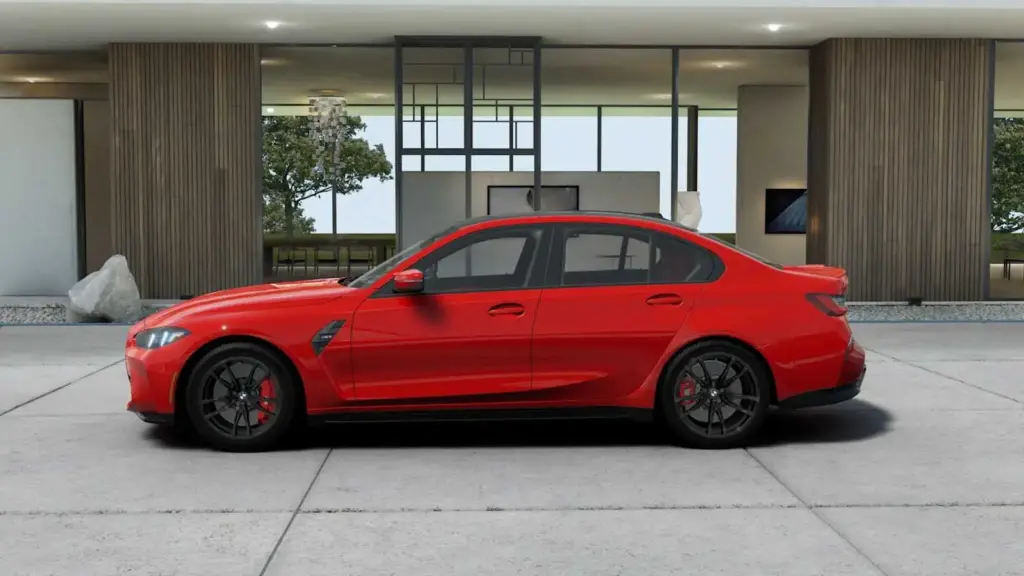
2026 BMW M3 Exterior Design & Styling
Controversial Front-End Design
The G80 M3’s most divisive element remains its massive vertical kidney grille—a design departure that sparked immediate controversy when introduced. While polarizing aesthetically, this grille serves genuine functional purposes, channeling air to the high-output engine’s cooling systems and various heat exchangers[1].
Reviewers consistently acknowledge the styling as “hard to love” and note the “controversial maw” dominates first impressions[1][2]. However, according to Autvex design analysis, form follows function with the G80 generation—BMW prioritized cooling capacity over traditional aesthetics to support increased performance levels.
The grille controversy illustrates BMW’s design philosophy evolution: modern M3 generations embrace aggressive, attention-grabbing aesthetics rather than the understated elegance of previous decades. Buyers seeking subtlety should consider whether they can live with styling that generates strong reactions from enthusiasts and casual observers alike.
M-Specific Exterior Elements
Beyond the grille, the M3 showcases numerous performance-oriented design elements that distinguish it from standard 3-Series models. Aggressive front air intakes flank the grille, feeding air to brake cooling ducts and intercoolers. Sculpted side skirts channel airflow along the body, reducing lift while creating visual drama[1].
The rear design features signature quad exhaust outlets—two per side—that announce the car’s performance intentions audibly and visually. A subtle trunk lip spoiler and aggressive rear diffuser complete the purposeful appearance. These elements combine function with aesthetics: the diffuser manages airflow exiting beneath the car, reducing drag while generating modest downforce[1].
Competition models receive additional visual enhancements including carbon fiber mirror caps, blacked-out exterior trim, and model-specific wheels. The M3 CS limited edition takes exterior styling to extremes with extensive carbon fiber bodywork including front splitter, rear wing, and complete diffuser replacement[3].
Aerodynamic Features
Active grille shutters close at speed when additional cooling isn’t required, reducing aerodynamic drag and improving highway fuel economy. These shutters open automatically when engine temperatures rise or during aggressive driving, ensuring adequate cooling capacity. Underbody aerodynamic panels smooth airflow beneath the vehicle, reducing turbulence that creates drag and lift[1].
The balance between drag reduction and downforce generation represents ongoing engineering challenges. Lower drag improves acceleration and fuel economy, while increased downforce enhances high-speed stability and cornering grip. BMW’s solution prioritizes drag reduction for everyday driving while generating sufficient downforce for track stability.
Wheel and Tire Options
The M3 offers progressively larger wheel options across trim levels:
- 18-inch forged aluminum wheels: Base M3 standard equipment
- 19-inch forged wheels: M3 Competition standard
- 20-inch lightweight forged wheels: Optional across Competition models[1]
Tire options range from all-season rubber for year-round driving to track-focused Michelin Pilot Sport Cup 2 tires on the M3 CS. The Competition models wear staggered fitments (narrower fronts, wider rears) optimized for traction under power while maintaining neutral handling balance.
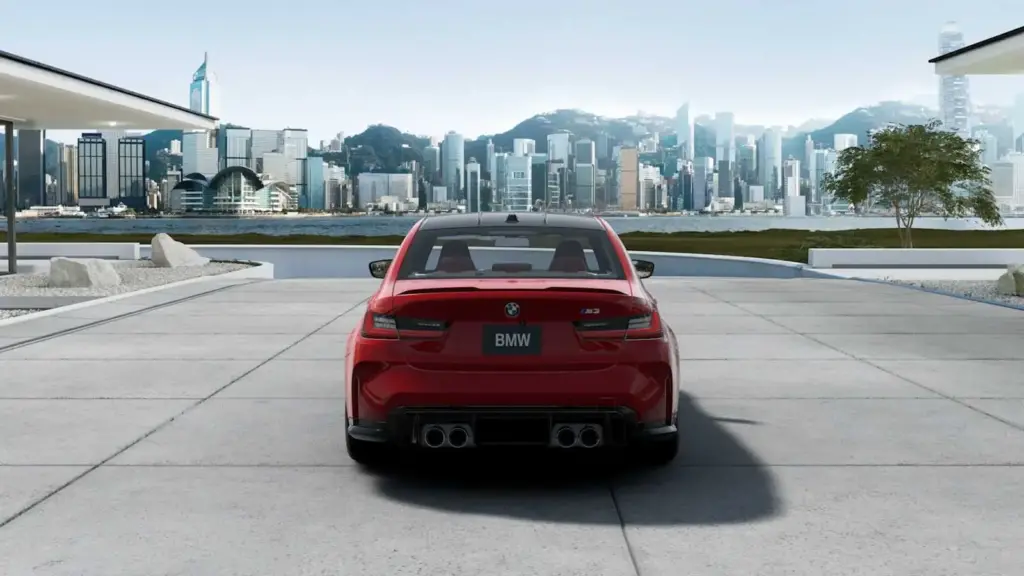
2026 BMW M3 Available Colors & Customization
Standard Exterior Colors
The 2026 M3 offers an extensive standard color palette covering conservative and bold aesthetic preferences. Standard colors include:
- Alpine White – Clean, timeless appearance
- Black Sapphire Metallic – Deep, rich black with metallic flake
- Brooklyn Gray, Dravit Gray, Skyscraper Gray – Three gray variations from warm to cool tones
- Isle of Man Green Metallic – Distinctive green with heritage appeal
- Portimao Blue Metallic – Vibrant blue showcasing M3’s performance character
- Sao Paulo Yellow – Bold, attention-grabbing statement color
- Toronto Red Metallic, Aventurin Red Metallic – Red options from conservative to aggressive[1]
Standard colors include no additional charge beyond base MSRP, making them attractive for budget-conscious buyers who still want color personalization.
BMW Individual Heritage Colors
For 2026, BMW significantly expanded Individual color availability through the online configurator, granting enthusiasts access to iconic M3 heritage shades[3]. Manual transmission models receive exclusive access to several legendary colors:
- Laguna Seca Blue – Iconic shade from E46 M3 CSL
- Dakar Yellow – Heritage performance color
- Techno Violet Metallic – Distinctive purple from E36 generation
- Imola Red II – Bright, energetic red
- Oxford Green Metallic – Classic BMW M color[3]
Competition and Competition xDrive models access different Individual selections including Avus Blue, Cinnabar, Goodwood Green Pearl Effect Metallic, and Daytona Violet Metallic[3]. This color segregation by trim level creates exclusivity while allowing BMW to manage production complexity.
Frozen (Matte) Paint Finishes
Three Frozen finishes carry over for 2026, delivering striking matte appearance:
- Frozen Brilliant White Metallic – Matte white with subtle metallic particles
- Frozen Portimao Blue Metallic – Matte blue showcasing M3’s performance credentials
- Frozen Pure Gray II Metallic – Sophisticated matte gray[1]
Frozen finishes require special care including hand washing and paint protection film to maintain appearance. These finishes show imperfections more readily than gloss paint, requiring meticulous maintenance.
Individual Paint Program Costs
BMW Individual paint colors command premium pricing:
- Standard Individual colors: $4,500+
- Frozen (matte) finishes: $6,000-$8,000
- Full BMW Individual catalog: Custom quote required[3]
These substantial upcharges reflect low-volume production requirements, specialized paint application processes, and extended curing times. Buyers seeking maximum personalization can access BMW’s complete Individual catalog, though pricing increases significantly for one-off custom colors.
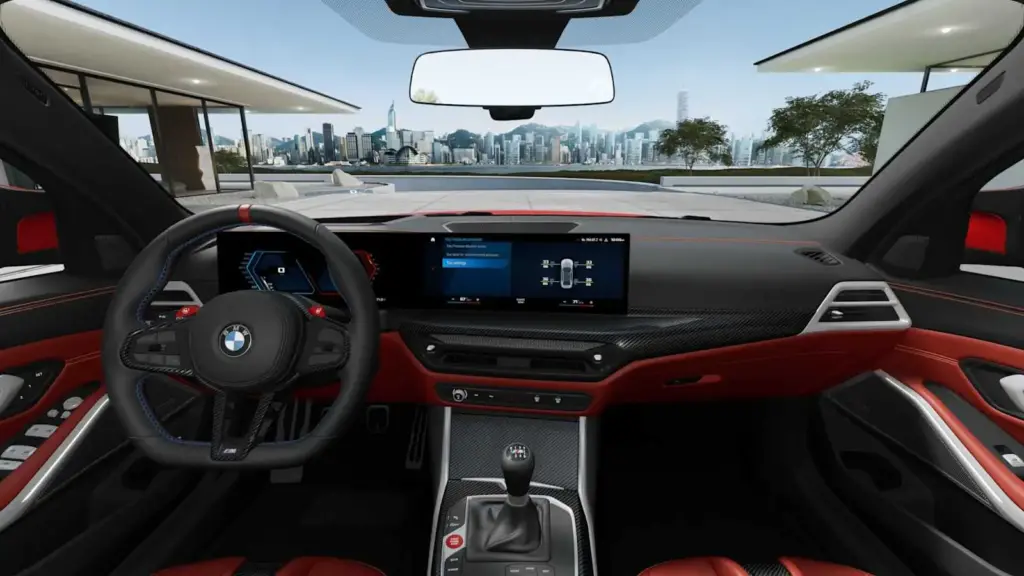
2026 BMW M3 Interior & Comfort
Cabin Design and Materials
The M3 cabin combines motorsport-inspired aesthetics with luxury sedan refinement. High-quality materials throughout include carbon fiber trim, microsuede (Alcantara) accents, and Merino leather upholstery as standard equipment[2]. Build quality matches or exceeds top-trim 3-Series models, with tight panel gaps and premium surface finishing.
Carbon fiber elements appear throughout—dashboard trim, center console, and door pulls all showcase the material’s distinctive weave pattern. Microsuede covers high-contact surfaces including the steering wheel and shifter boot (manual models), providing grip and tactile feedback that leather cannot match. M-colored stitching on seats and steering wheel reinforces the car’s performance credentials[2].
The driver faces BMW’s Curved Display—a seamless panel integrating digital instruments and central touchscreen. This display dominates the dashboard, representing BMW’s shift toward digital interfaces over traditional analog gauges.
Seating Configuration
M Sport seats come standard, featuring aggressive bolstering that provides lateral support during spirited driving without excessive restriction during normal commuting. These seats offer power adjustment including lumbar support, thigh extension, and side bolster width[2].
Optional M carbon bucket seats ($4,500) take performance focus to extremes. These lightweight seats feature carbon fiber seat backs and aggressive bolstering that holds occupants firmly in place during track driving. However, Edmunds reviewers specifically warn against these seats unless treating the M3 as a dedicated track car: “They have comfortable padding, but their high-profile thigh bolsters make it difficult to enter and exit the vehicle”[7].
The heated steering wheel (now standard for 2026) and heated front seats enhance cold-weather comfort. Power-adjustable front seats with memory function enable quick position changes when multiple drivers share the vehicle[2].
Rear seating accommodates two adults comfortably for short trips, though the center position exists primarily for occasional use. The M3’s sedan bodystyle provides more rear headroom than coupe alternatives, making it genuinely viable for passengers rather than merely emergency seating.
Interior Space and Dimensions
Interior dimensions demonstrate the M3’s practical side:
| Dimension | Front | Rear |
|---|---|---|
| Headroom | 38.9 inches | 37.5 inches |
| Legroom | 42.0 inches | 35.5 inches |
| Shoulder Room | 56.2 inches | 53.9 inches |
| Hip Room | 53.9 inches | 52.2 inches[1] |
Trunk capacity measures 16.9 cubic feet—respectable for the compact sedan class and five cubic feet more than the Mercedes-Benz C-Class[2]. The 40/20/40 split-folding rear seats expand cargo capacity for longer items, though the pass-through opening remains relatively narrow. This trunk space proves adequate for weekend getaways, track day gear including helmets and tools, or grocery runs.
Edmunds notes that interior space is “pretty good for a compact sedan, and there’s a touch more legroom than in competitors,” making the M3 genuinely viable as sole transportation rather than requiring a second vehicle for practical duties[7].
Climate Control and Ambient Features
Tri-zone automatic climate control manages temperature independently for driver, front passenger, and rear occupants. This system responds quickly, with powerful fans ensuring rapid heating or cooling. Customizable ambient lighting with multiple color options creates upscale atmosphere during evening driving[2].
The available Harman Kardon surround sound system delivers exceptional audio quality with strategically placed speakers throughout the cabin. An optional Alcantara headliner adds visual interest while reducing interior sound reflection for improved acoustic quality.
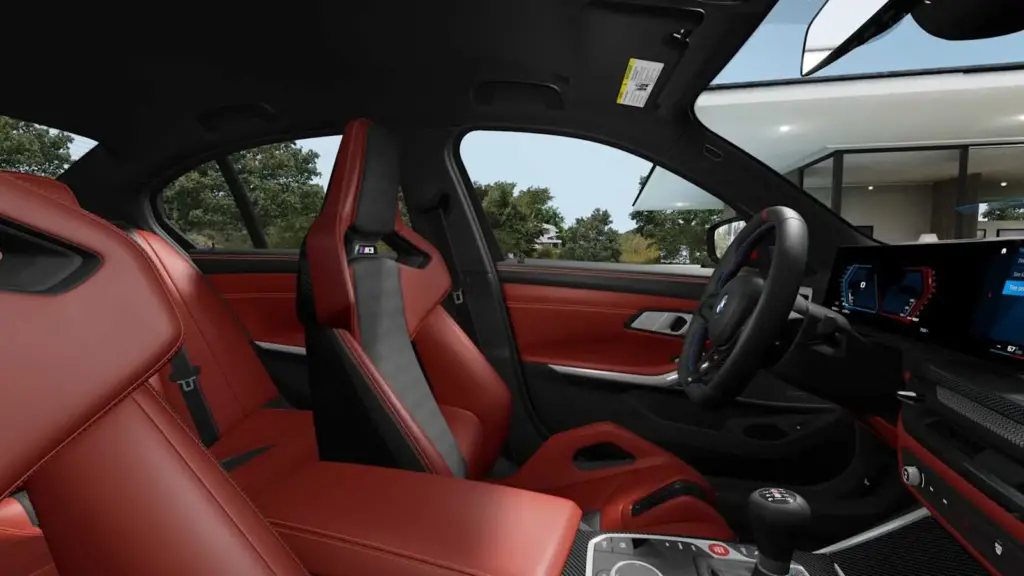
2026 BMW M3 Technology & Infotainment
BMW Curved Display and iDrive 8.5
The centerpiece of the M3’s technological advancement is BMW’s Curved Display—a seamless 12.3-inch digital instrument cluster integrated with a massive 14.9-inch central touchscreen[1][2]. This curved panel eliminates traditional separation between driver display and infotainment screen, creating unified digital cockpit that flows naturally with dashboard contours.
The iDrive 8.5 operating system powers this display, representing BMW’s most advanced infotainment platform. The interface utilizes customizable widgets that users can arrange according to preference, displaying information including navigation, media, performance data, and vehicle systems. The touchscreen responds quickly to inputs with minimal lag, though some functions require diving into menu structures rather than offering one-touch access[2].
In sportier drive modes, the instrument cluster automatically switches to M View—a performance-focused display that enlarges the tachometer and positions it centrally, with speed displayed digitally. This layout mimics race car instrumentation, prioritizing the information most relevant during performance driving.
Smartphone Integration and Connectivity
Wireless Apple CarPlay and Android Auto come standard, eliminating cable clutter while providing seamless smartphone integration[1]. BMW Intelligent Personal Assistant enables voice control for numerous functions including navigation, climate control, and media selection. The natural language processing responds to conversational commands rather than requiring specific phrasing.
Cloud-based navigation with real-time traffic data ensures route guidance remains current, automatically rerouting around congestion. Over-the-air software updates maintain system currency throughout ownership, with BMW regularly releasing improvements for infotainment functionality, driver assistance systems, and vehicle performance parameters[1].
The BMW Connected app provides remote vehicle management through smartphones, allowing owners to check vehicle status, lock/unlock doors, activate climate control remotely, and schedule service appointments without calling dealers.
M-Specific Performance Technology
The optional M Drive Professional package ($2,500) unlocks comprehensive track-focused technology. This suite includes:
- Lap timer with sector timing: Record and compare lap times with split times for track sections
- Drift analyzer: Five-star scoring system evaluates drift quality, angle, and duration—making it gamification for sideways enthusiasts
- Performance data logging: Record acceleration, braking, and cornering forces with GPS-based track mapping
- M View digital gauge cluster: Performance-focused instrument display[1]
Tire pressure and temperature monitoring displays real-time data for all four tires, enabling track drivers to optimize pressure settings for maximum grip. This feature proves particularly valuable during track days when tire pressures rise significantly under hard use.
Infotainment User Experience
The interface offers touchscreen operation, voice control, or traditional iDrive controller (still present on center console). This multi-modal approach accommodates different user preferences—some prefer touchscreen simplicity while others favor the physical controller’s tactile feedback.
M Setup buttons provide quick access to driving mode configurations without navigating through menus. Red M mode buttons on the steering wheel enable instant activation of pre-configured performance settings, allowing drivers to switch from comfortable cruising to track-ready aggression with single button presses[1].
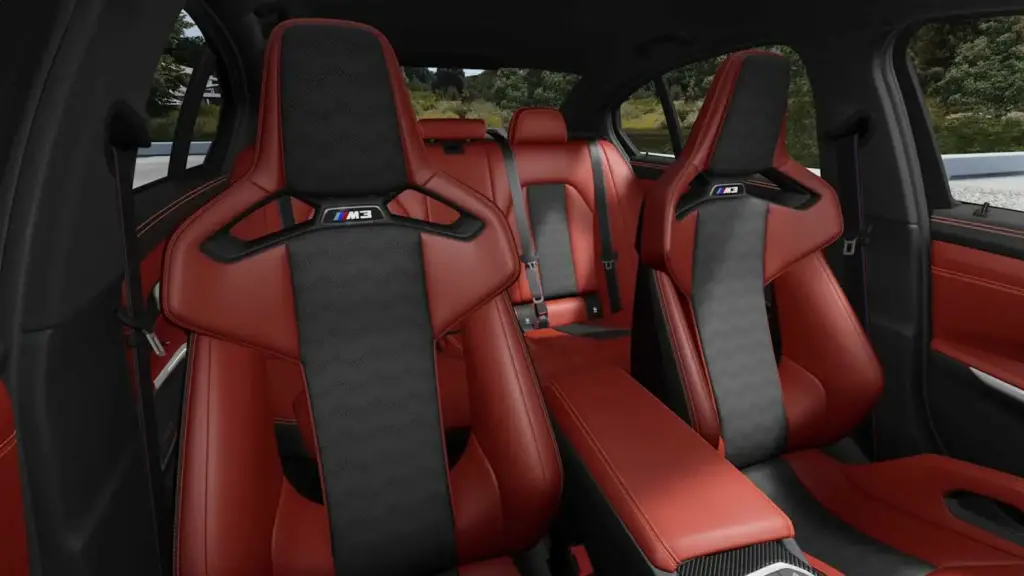
2026 BMW M3 Trim Levels & Configurations
M3 Base ($79,575)
The entry-level M3 represents the purist’s choice, emphasizing driver engagement through its exclusive six-speed manual transmission[1]. This configuration produces 473 horsepower from the S58 engine—substantial output that still provides headroom below Competition variants.
Key Features:
- 473 hp, 406 lb-ft torque
- Six-speed manual transmission (not available on other trims)
- Rear-wheel drive exclusively
- 18-inch forged aluminum wheels
- M Sport seats with Merino leather
- Adaptive M suspension (softer tuning than Competition)
- 0-60 mph in 4.1 seconds[1]
Edmunds notes that the base M3 provides the best ride quality in the lineup, with suspension tuning prioritizing compliance over the Competition’s track-focused stiffness[7]. This makes it particularly appealing for buyers prioritizing daily comfort alongside performance capability.
The Active M Differential comes as optional equipment ($2,500), though serious drivers should consider this essential for optimizing corner exit traction. For those exploring BMW’s M vehicle lineup, the base M3 offers exceptional value for manual transmission enthusiasts.
M3 Competition ($82,600 RWD / $88,875 xDrive)
The Competition variant elevates performance through increased power output and standard performance equipment. Two drivetrain options provide flexibility for different climates and driving preferences[1].
Competition RWD Specifications:
- 503 hp, 479 lb-ft torque
- Eight-speed M Steptronic automatic transmission
- Rear-wheel drive
- 0-60 mph in 3.8 seconds
- Starting MSRP: $82,600[1]
Competition xDrive Specifications:
- 523 hp, 479 lb-ft torque
- xDrive intelligent AWD with rear-bias
- Eight-speed automatic transmission
- 0-60 mph in 3.4 seconds (2.8 seconds tested)
- Starting MSRP: $88,875[1]
Both Competition variants include Active M Differential as standard equipment, 19-inch forged wheels, and enhanced suspension tuning. The automatic transmission delivers lightning-quick shifts that manual gearboxes cannot match, though it eliminates the engagement purists value.
M3 Competition xDrive (Top Configuration)
The Competition xDrive represents the M3’s performance pinnacle, combining maximum power output with all-weather capability. The xDrive system transforms winter driving from white-knuckle anxiety to confident progress, while maintaining the M3’s rear-bias handling character during summer months[1].
Car and Driver testing revealed this configuration achieves 2.8-second 0-60 mph times—performance rivaling dedicated supercars like the Porsche 911 and Chevrolet Corvette[1]. This represents the quickest acceleration in the M3’s four-decade history, demonstrating how far performance technology has advanced.
The 2WD mode disables front power delivery completely, effectively converting the xDrive M3 into a rear-drive machine for enthusiast driving. This feature addresses concerns that all-wheel drive dilutes the M3 experience—drivers can enjoy winter confidence while preserving summer fun.
Limited Edition: M3 CS
The ultra-performance M3 CS variant delivers 550 horsepower through extensive engine modifications, achieving 0-60 mph in 3.2 seconds[3]. Carbon fiber components throughout reduce weight by approximately 75 pounds compared to standard Competition models, while track-focused suspension tuning maximizes grip.
Gold-finished 19-inch forged wheels, carbon fiber front splitter, rear wing, and complete diffuser replacement distinguish CS models visually. Inside, CS models feature exclusive upholstery and additional carbon fiber trim. Production remains limited, with pricing exceeding $110,000.
The M3 CS Touring wagon variant brings the same 550 hp performance to a more practical body style, though US availability remains uncertain[3].
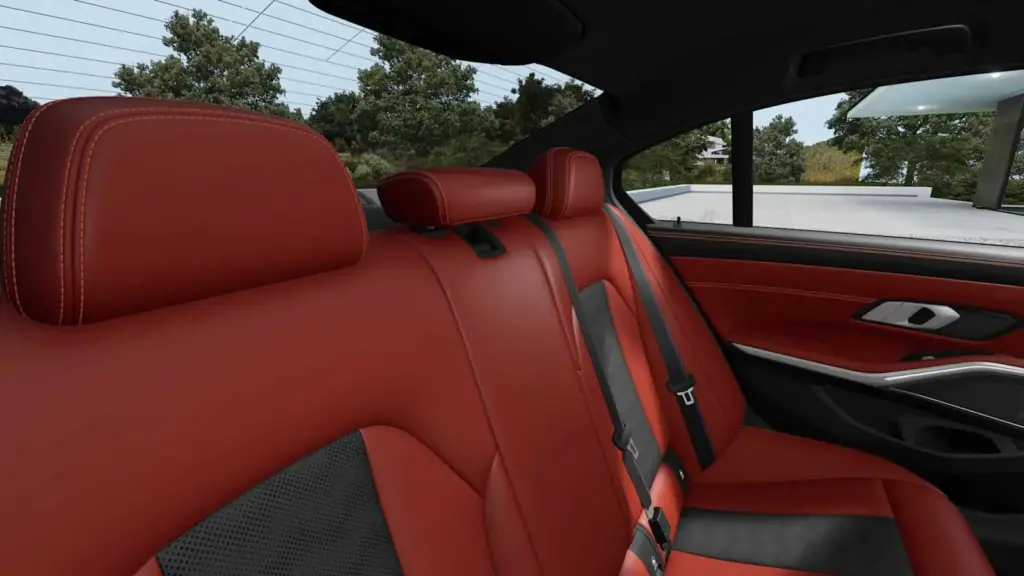
2026 BMW M3 Pricing & Value
MSRP Breakdown by Trim
BMW significantly increased M3 pricing for 2026, with base models starting at $79,575—a substantial $1,700 increase over 2025[9]. This pricing escalation reflects broader automotive market trends, with performance vehicles commanding premium pricing in constrained supply environments.
| Trim Level | 2026 MSRP | 2025 MSRP | Increase |
|---|---|---|---|
| M3 Base Manual | $79,575 | $77,875 | $1,700 |
| M3 Competition RWD | $82,600 | $80,900 | $1,700 |
| M3 Competition xDrive | $88,875 | $87,175 | $1,700 |
| M3 CS | $110,000+ (est.) | N/A | New model[1][9] |
Destination charges ($995) apply to all models, bringing effective starting prices to $80,570 for base manual M3 models. These increases positioned the M3 substantially higher than when the G80 generation debuted, reflecting both inflation and BMW’s brand positioning strategy.
Popular Options and Packages
Options escalate pricing quickly, with popular selections including:
- Carbon-ceramic brakes: $8,500 (provides fade-resistant track performance with gold calipers)
- M Carbon Package: $8,000-$12,000 (extensive carbon fiber exterior components)
- Carbon fiber bucket seats: $4,500 (weight savings and maximum support, though entry/exit challenging)
- Executive Package: $5,000-$7,000 (adds luxury features including soft-close doors)
- M Driver’s Package: $2,500 (raises top speed limit to 180 mph)
- Individual paint: $4,500-$8,000 (heritage colors or Frozen finishes)[1][3]
The M Drive Professional package ($2,500) unlocks track apps including lap timer and drift analyzer—essential for buyers planning track day participation.
Total Cost with Options
Average transaction prices for 2026 M3 models range from $85,000-$100,000 depending on trim level and option selections[1]. Fully-loaded Competition xDrive models easily exceed $110,000 with popular options including carbon-ceramic brakes, Individual paint, carbon fiber components, and premium interior treatments.
Common option bundles that buyers frequently select:
- Track Enthusiast Package: M Drive Professional ($2,500), carbon-ceramic brakes ($8,500), M Carbon Package ($10,000) = $21,000 additional
- Daily Driver Luxury Package: Executive Package ($6,000), Individual paint ($5,000), premium sound ($1,200) = $12,200 additional
- Ultimate Performance Package: Carbon bucket seats ($4,500), carbon-ceramic brakes ($8,500), M Driver’s Package ($2,500) = $15,500 additional
These option bundles demonstrate how quickly M3 pricing escalates beyond base MSRP, with $20,000-$30,000 in options representing common configurations.
Financing and Lease Considerations
BMW Financial Services offers competitive financing with current APR rates around 5.49% for 72-month terms on select M3 models[1]. However, extended 84-month financing has become increasingly common as pricing has risen, though longer terms result in higher total interest paid and extended periods of negative equity.
Typical lease terms include:
- 36-month duration
- 10,000-12,000 annual miles
- $5,000-$8,000 down payment
- Monthly payments: $1,100-$1,400 (base) to $1,400-$1,700 (Competition xDrive)
Edmunds’ True Cost to Own analysis projects five-year ownership costs at $110,342 for the Competition xDrive, including depreciation, financing, fuel, maintenance, repairs, insurance, and taxes[10]. The base manual model shows slightly lower costs at $101,320 over five years[10].
Should buyers lease or finance? Leasing makes sense for those wanting new vehicles every 3-4 years without ownership responsibilities. Financing suits buyers planning 7+ year ownership who want to build equity. For those seeking information about the car purchase timeline, expect 2-4 weeks from order to delivery for in-stock configurations.
Trade-in value optimization requires timing consideration. Current G80 M3 owners should monitor market conditions, as values may decline moderately when the 2027 redesign arrives, though manual transmission models will likely hold value better due to their increasing rarity[11].
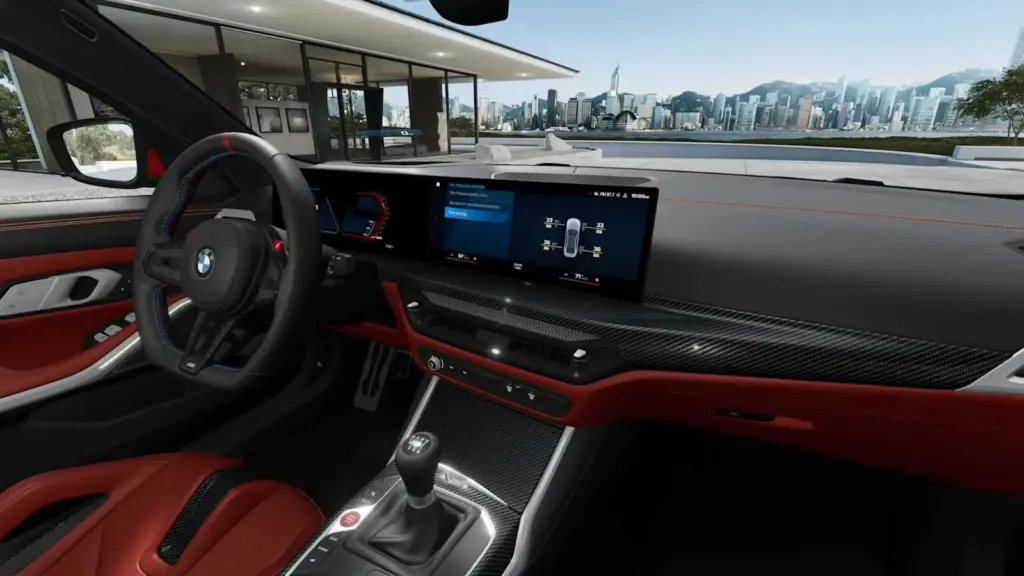
2026 BMW M3 Safety Features & Ratings
Crash Test Ratings
The 2026 BMW M3 earned an overall five-star safety rating from NHTSA, with individual five-star scores in frontal crash, side impact, and rollover categories[12][13]. These results demonstrate that the M3’s performance focus doesn’t compromise occupant protection during accidents.
The Insurance Institute for Highway Safety (IIHS) awarded the BMW 3-Series platform (which the M3 shares structural elements with) a Top Safety Pick designation[14]. The 3-Series achieved a Superior rating in IIHS pedestrian protection testing, demonstrating that automatic emergency braking effectively detects and prevents collisions with pedestrians[15].
NHTSA Crash Test Results:
- Overall Rating: 5 stars
- Frontal Crash: 5 stars
- Side Crash: 5 stars
- Rollover: 5 stars[12]
Standard Safety Equipment
All 2026 M3 models include comprehensive active safety technologies as standard equipment:
- Eight airbags: Front, side, curtain, and knee airbags for driver and passenger
- Automatic emergency braking: Detects vehicles, pedestrians, and cyclists, automatically applying brakes when collision imminent
- Lane departure warning: Monitors lane markings and provides steering vibration feedback
- Blind spot detection: Uses sensors to monitor adjacent lanes with visual alerts in side mirrors
- Rear cross-traffic alert: Warns of approaching vehicles when reversing from parking spaces[1]
These systems work cooperatively, creating multiple layers of protection that reduce accident risk during both daily commuting and performance driving scenarios.
Advanced Driver Assistance Systems
The optional Driving Assistance Professional Package ($1,700) adds advanced semi-autonomous capabilities:
- Adaptive cruise control with stop-and-go: Maintains set following distance and automatically stops/resumes in traffic
- Active lane keeping assist: Provides gentle steering inputs to maintain lane position
- Evasion assist: Adds steering support during emergency avoidance maneuvers
- Front collision warning: Advanced warning before automatic emergency braking engages
- Parking assist: Automated parallel and perpendicular parking[1]
These systems enhance safety and reduce driver fatigue during long highway journeys, though BMW emphasizes they require active driver supervision—hands must remain on the steering wheel at all times.
Warranty and Roadside Assistance
BMW provides comprehensive coverage for the 2026 M3:
- Basic warranty: 4 years / 50,000 miles
- Powertrain warranty: 4 years / 50,000 miles
- Roadside assistance: 4 years / unlimited miles
- Corrosion perforation: 12 years / unlimited miles[1]
This coverage falls short of longer warranty periods offered by some competitors like Genesis (10 years / 100,000 miles), though BMW’s reputation for reliability helps offset shorter warranty duration.
Maintenance costs during the warranty period remain relatively low, with BMW covering first scheduled service. According to CarEdge data, M3 maintenance costs approximately $4,762 during the first five years, with a 42% probability of major repair[16]. Extended warranty purchases merit consideration given the 41.71% chance of major repair during the first 10 years[16].

Pros and Cons of the 2026 BMW M3
Key Advantages
The 2026 BMW M3 delivers numerous strengths that maintain its benchmark status:
Explosive Performance: The twin-turbocharged inline-six engine produces up to 523 horsepower, delivering acceleration rivaling supercars costing twice as much. The Competition xDrive’s 2.8-second 0-60 mph time legitimately competes with Porsche 911 and Chevrolet Corvette[1].
Athletic Handling: Adaptive M suspension provides exceptional cornering capability with minimal body roll. The car delivers confidence-inspiring grip levels that encourage spirited driving while maintaining composure at the limit[7].
Premium Interior Quality: High-quality materials including carbon fiber, Alcantara, and Merino leather create an upscale environment. Build quality matches luxury sedan standards despite the car’s performance focus[2].
Practical Daily Driver: The 16.9 cubic foot trunk and usable back seat make the M3 genuinely viable as sole transportation. Unlike dedicated sports cars requiring second vehicles for practical duties, the M3 handles grocery runs, airport trips, and weekend getaways without compromise[2].
Manual Transmission Availability: The base M3’s six-speed manual represents an increasingly rare offering among high-performance sedans. As manufacturers shift toward automatics and electrification, the 2026 M3 may be among the last opportunities to purchase new manual transmission M cars[6].
Track Capability with Comfort: The M3 transitions effortlessly from track day weapon to comfortable daily commuter. Drive mode adjustments transform character from aggressive to compliant within seconds[1].
Strong Reliability: The current G80 generation has proven generally trouble-free through its production run, with proper maintenance ensuring longevity[8].
Notable Disadvantages
Despite its strengths, the M3 presents several drawbacks:
- Divisive Front-End Styling: The vertical kidney grille remains controversial, with reviewers consistently noting the design as “hard to love.” While functional for cooling, the grille generates strong reactions that potential buyers must accept[1][2].
- Light Steering Feel: Modern BMW steering calibration lacks progressive weight buildup that older M3 generations provided. While quick and responsive, the steering makes it difficult to intuitively sense wheel position during aggressive cornering, particularly in Comfort mode[7].
- Significantly Higher Pricing: The 2026 model year brings substantial price increases—$1,700 across all trims. Base models now start near $80,000, with fully-optioned variants easily exceeding $110,000[9].
- Firm Ride Quality: Even in Comfort mode, the M3’s ride remains firm by luxury sedan standards. Performance-oriented suspension geometry prioritizes handling over compliance, transmitting road imperfections directly to occupants[7].
- Expensive Options: Popular options like carbon-ceramic brakes ($8,500), Individual paint ($4,500-$8,000), and carbon bucket seats ($4,500) escalate pricing quickly. A reasonably equipped M3 easily reaches $100,000+[1].
- Drive Mode Complexity: The extensive array of configurable parameters—engine, transmission, suspension, steering, brake feel—creates complexity that overwhelms some drivers. Setting up personalized M modes requires navigating multiple menu levels[1].
Common Owner Complaints and Issues
Real-world owner experiences reveal several recurring concerns:
- Brake Performance Inconsistency: Multiple owners report occasional brake feel inconsistency, particularly with carbon-ceramic brakes. One owner specifically noted: “The brakes are good but sometimes…It keeps happening random and almost crashed because of it”[8]. This suggests thorough testing of brake systems before purchase.
- Exhaust Noise at Startup: The M3’s cold start produces pronounced exhaust noise that neighbors may find objectionable during early morning departures. While characteristic of high-performance engines, the volume level catches some owners by surprise.
- Maintenance Importance: The high-output S58 engine requires strict adherence to maintenance schedules. Oil changes every 7,500 miles (or less for track use) prove essential for longevity. According to CarEdge, maintenance costs average $1,487 per year over 10 years[16].
- Carbon-Ceramic Brake Wet Weather Performance: Owners note that carbon-ceramic brakes require warm-up for optimal performance and may feel less confident in wet conditions compared to standard brakes[8].
2026 BMW M3 Competitive Comparison
Mercedes-AMG C63 S E Performance
The Mercedes-AMG C63 represents the M3’s primary German rival, though Mercedes made the controversial decision to replace its beloved V8 with a 2.0-liter four-cylinder plug-in hybrid producing 671 horsepower[17]. This powertrain delivers impressive output but weighs approximately 4,750 pounds—nearly 500 pounds more than the M3 Competition xDrive[17].
| Specification | 2026 BMW M3 Competition xDrive | Mercedes-AMG C63 S E Performance |
|---|---|---|
| Engine | 3.0L twin-turbo I6 | 2.0L turbo I4 + electric motor |
| Horsepower | 523 hp | 671 hp |
| Torque | 479 lb-ft | 752 lb-ft |
| 0-60 MPH | 2.8 seconds (tested) | ~3.4 seconds |
| Weight | ~3,800 lbs | ~4,750 lbs |
| Drivetrain | AWD (rear-bias) | AWD[1][17] |
In direct acceleration testing, the lighter M3 CS has consistently beaten the more powerful C63, with the BMW’s superior power-to-weight ratio overcoming the Mercedes’ horsepower advantage[18]. The M3 also maintains its traditional inline-six engine character, while the C63’s four-cylinder lacks the V8 rumble that previously defined the model[17].
The C63 offers slightly more rear legroom and cargo capacity, though the M3 maintains advantages in handling precision and driver engagement. Pricing positions the C63 at premium levels exceeding the M3, though exact comparisons remain difficult due to different standard equipment levels.
Audi RS5 Sportback
The Audi RS5 Sportback provides another German alternative, featuring a twin-turbo 2.9-liter V6 producing 444 horsepower paired with Audi’s legendary Quattro all-wheel-drive system. While less powerful than the M3, the RS5 emphasizes refinement and technology leadership over outright performance[19].
The RS5’s interior typically matches or exceeds BMW in technology integration, with Audi’s Virtual Cockpit displays and MMI infotainment receiving praise for intuitive operation. However, the RS5 adopts a comfort-focused approach that prioritizes daily usability over the M3’s driver engagement. Pricing places the RS5 slightly below the M3, though performance capabilities remain closely matched rather than competitive.
Cadillac CT4-V and CT5-V Blackwing
America’s answer to German performance sedans, the Cadillac CT5-V Blackwing delivers 668 horsepower from a supercharged 6.2-liter V8—the most powerful engine in this comparison[1]. The CT5-V Blackwing offers available manual transmission and traditional muscle car performance at pricing significantly below the M3.
However, the Cadillac lacks the M3’s handling precision and advanced technology integration. Interior quality, while improved in recent generations, doesn’t quite match German luxury sedan standards. The CT5-V Blackwing appeals to buyers prioritizing raw power and value over refinement and technology.
Alfa Romeo Giulia Quadrifoglio
The Alfa Romeo Giulia Quadrifoglio remains a favorite among automotive enthusiasts who value driving engagement above all else. Its twin-turbo 2.9-liter V6 produces 505 horsepower while delivering intoxicating exhaust notes and exceptional handling dynamics[20].
Many reviewers argue the Giulia Quadrifoglio provides superior driving feel compared to the M3, with more communicative steering and chassis balance. However, reliability concerns plague Alfa Romeo ownership, with Consumer Reports ranking the brand among the least reliable. Market availability and dealer network limitations further complicate the buying decision, as Alfa Romeo’s long-term US commitment remains uncertain[20].
Why the M3 Remains Competitive
The 2026 BMW M3’s unique positioning stems from several factors that competitors struggle to match:
- Powertrain Versatility: The M3 offers three distinct powertrain configurations (manual RWD, automatic RWD, automatic AWD) providing flexibility competitors don’t match. Buyers can prioritize engagement, performance, or all-weather capability according to personal preferences.
- Dealer Network Strength: BMW’s extensive US dealer network ensures service availability nationwide. Competitive brands like Alfa Romeo offer limited dealer coverage, complicating ownership in many regions.
- Resale Value: Historical M3 resale values significantly exceed most competitors, offsetting higher purchase prices through stronger retained value. Manual transmission models particularly hold value due to increasing rarity[11].
- Daily Usability Balance: The M3 uniquely balances track capability with daily comfort. While dedicated sports cars offer more engagement and luxury sedans provide superior comfort, no competitor matches the M3’s ability to excel at both roles simultaneously[5].
According to Autvex market analysis, the M3’s comprehensive capabilities—performance, technology, practicality, brand prestige—create a value proposition that competitors struggle to match despite offering individual strengths in specific areas.
Should You Buy the 2026 BMW M3?
Buy Now or Wait for 2027 Redesign?
The 2026 model year’s significance as potentially the final pre-redesign M3 creates a critical decision point for buyers. The 2027 M3 will transition to BMW’s Neue Klasse platform, bringing electric powertrains alongside gas options, completely new styling, and uncertain manual transmission availability[4].
Reasons to Buy the 2026 Model:
- Last purely combustion-powered M3 generation
- Manual transmission availability may not continue post-2027[21]
- Current G80 design polarizing but proven reliable
- Avoid potential first-year issues with all-new platform
- Limited-time opportunity for final “analog” M3 experience
Reasons to Wait for 2027:
- Completely new design may have broader appeal
- Electric powertrain offers 700+ horsepower potential[4]
- Next-generation technology and interior
- Avoid end-of-cycle depreciation on 2026 models
- See real-world reviews before committing
Owner discussions on enthusiast forums like BimmerPost reveal mixed sentiment. Some argue: “If you tend to keep your cars 7 years or more, wait for the 2027 new model. It will still feel new in 2034 (as opposed to a 2026 M3 that will look dated)”[22]. Others counter that manual transmission enthusiasts should buy now, as the six-speed manual likely won’t survive the platform transition[11].
For those interested in BMW’s electric future, waiting provides access to groundbreaking technology. However, buyers valuing traditional performance car characteristics—manual transmissions, naturally aspirated sound character (albeit turbocharged), mechanical engagement—should secure the 2026 model before it disappears.
Best Configuration for Most Buyers
Selecting the optimal M3 configuration depends heavily on individual priorities and driving environments. For most buyers, the M3 Competition xDrive represents the sweet spot, combining effortless speed with all-weather confidence. The automatic transmission delivers quicker acceleration than the manual while eliminating clutch pedal management in stop-and-go traffic. The xDrive system provides winter capability that rear-drive models simply cannot match, transforming snow-covered roads from impassable barriers to manageable challenges[1].
However, manual transmission enthusiasts should strongly consider the base M3. This configuration offers maximum driver engagement through its six-speed gearbox, preserving the traditional sports car experience that’s rapidly disappearing from showrooms. The base suspension tuning also provides superior ride comfort for daily driving compared to the Competition’s track-focused setup[7].
For track day regulars, the rear-wheel-drive Competition model offers optimal balance. The lighter weight (compared to xDrive) enhances agility and corner-entry rotation, while the automatic transmission enables left-foot braking techniques. Track enthusiasts should budget for carbon-ceramic brakes ($8,500) and M Drive Professional ($2,500) to maximize circuit capability.
Daily drivers in temperate climates benefit most from the base or Competition RWD models. Without winter weather concerns, the additional $6,275 for xDrive provides minimal value, while the lighter weight enhances everyday driving engagement.
Long-Term Ownership and Reliability
The current G80 M3 generation has demonstrated generally trouble-free operation through its production run, with proper maintenance ensuring longevity. Early concerns about the S58 engine have largely proven unfounded, with the powerplant showing robust durability when serviced according to BMW’s schedules[8].
Maintenance Critical Factors:
Regular oil changes prove absolutely essential—BMW recommends 7,500-mile intervals, though track use or aggressive driving merits 5,000-mile changes. The S58’s high-output nature generates substantial internal heat and stress, making fresh oil critical for bearing and turbocharger longevity. One BimmerPost user noted: “After 6 months of ownership…The car has been flawless. Zero issues”[23].
The first 50,000 miles typically pass issue-free with proper care, though CarEdge data suggests a 42% probability of major repair during the first five years[16]. Extended warranty purchases merit consideration for buyers planning 7+ year ownership, as the probability of major repair increases to 41.71% during the first 10 years[16].
Average annual maintenance costs run approximately $1,487, totaling $14,871 over 10 years[16]. This positions the M3 slightly above luxury sedan averages but below exotic sports car territory. Buyers should budget $2,000-$3,000 annually for maintenance, insurance, and consumables like tires and brake pads.
Long-term value retention favors manual transmission models, which will likely become collectible as manual M3s cease production. The Competition xDrive’s broad appeal should maintain strong used market demand, while base automatic-transmission models (if produced) typically depreciate most rapidly.
Alternatives to Consider
Buyers uncertain about the 2026 M3 have several compelling alternatives:
- Current BMW M3 Competition: Purchasing a lightly-used 2024-2025 model provides identical performance at reduced pricing. Certified Pre-Owned programs offer warranty coverage while delivering significant savings versus new purchases. One-year-old M3 Competition models typically trade 15-20% below new MSRP.
- Wait for 2027 Redesign: Buyers flexible on timing can wait for the Neue Klasse platform’s revolutionary changes. The electric M3 promises 700+ horsepower with instant torque delivery, while the gas variant continues inline-six tradition[4]. However, expect limited initial availability and potential first-year production issues.
- Mercedes-AMG C63 S E Performance: The C63’s 671-horsepower plug-in hybrid delivers more power than any M3, though the four-cylinder engine character and substantial weight penalty create trade-offs. Buyers prioritizing straight-line performance over handling purity may prefer the Mercedes approach[17].
- Cadillac CT5-V Blackwing: American buyers seeking maximum value should consider the CT5-V Blackwing. Its supercharged V8 produces 668 horsepower with available manual transmission at pricing significantly below the M3. While interior quality and technology lag behind German competitors, raw performance per dollar favors the Cadillac[1].
For those exploring BMW’s broader lineup, the smaller M2 coupe offers similar performance in a more compact package at lower pricing.
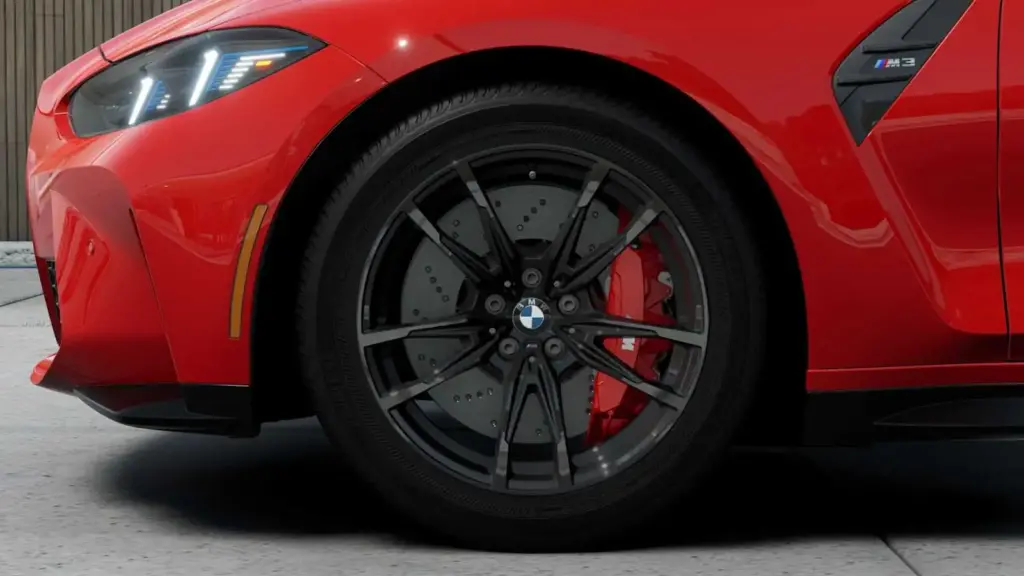
Final Verdict: 2026 BMW M3 Assessment
Performance and Driving Dynamics
The 2026 BMW M3 delivers supercar-rivaling acceleration wrapped in a practical sedan body. The Competition xDrive’s tested 2.8-second 0-60 mph time legitimately competes with vehicles costing twice as much, while maintaining usable back seats and a 16.9-cubic-foot trunk[1].
Handling precision remains confidence-inspiring despite some steering feel limitations. The M3 attacks corners with minimal body roll and abundant grip, encouraging spirited driving while maintaining composure at the limit. The car transitions effortlessly from track toy to daily commuter—a versatility few competitors match[7].
The M3 maintains benchmark performance sedan status through this generation, consistently outperforming competitors in objective testing while providing subjective driving satisfaction that numbers cannot capture.
Technology and Interior Quality
The impressive iDrive 8.5 Curved Display represents BMW’s technological leadership, combining 12.3-inch digital instruments with a 14.9-inch touchscreen in a seamless panel[1]. M-specific performance apps including lap timer, drift analyzer, and telemetry logging transform the M3 into a mobile track day laboratory, helping drivers improve skills while documenting achievements.
Premium materials throughout the cabin—carbon fiber, Alcantara, Merino leather—create an upscale environment matching luxury sedan standards. Build quality proves excellent, with tight panel gaps and premium surface finishing. The practical 16.9-cubic-foot trunk and usable rear seats make the M3 genuinely viable as sole transportation rather than requiring second vehicles for practical duties[2].
Value Proposition
At $79,575-$88,875, the M3 commands premium pricing that reflects its benchmark status. The car delivers on its performance promise, providing capabilities that justify the substantial investment. Higher pricing versus previous model years positions the M3 firmly in the luxury performance segment, though it remains more accessible than six-figure exotics offering comparable acceleration[1][9].
Strong historical resale values offset higher purchase prices through retained value. Manual transmission models particularly benefit from increasing rarity, potentially achieving collectible status as manual M3s cease production. Lease versus finance considerations favor leasing for buyers wanting new vehicles every 3-4 years, while financing suits those planning 7+ year ownership who want to build equity.
Overall Recommendation
The 2026 BMW M3 represents the best choice for manual transmission enthusiasts seeking final opportunities to purchase new six-speed M3s before they disappear from showrooms. BMW executives have not committed to manual transmission availability post-2027, making the current generation potentially the last[21].
The M3 Competition xDrive offers the most compelling option for all-weather performance seekers, combining maximum power (523 hp) with year-round usability. The intelligent xDrive system provides winter confidence while maintaining the M3’s rear-bias character during summer months[1].
Buyers who find the current G80 design unappealing should consider waiting for the 2027 Neue Klasse redesign, which brings completely new styling that may have broader aesthetic appeal. However, waiting means accepting electrification, potential manual transmission elimination, and possible first-year production issues[4].
The 2026 M3 remains an exceptional performance sedan that maintains benchmark status through this generation. While not perfect—divisive styling, firm ride quality, expensive options—it delivers comprehensive capabilities that competitors struggle to match. For enthusiasts seeking the final purely combustion-powered M3 generation, the time to act is now before the 2027 transition changes the M3 forever.
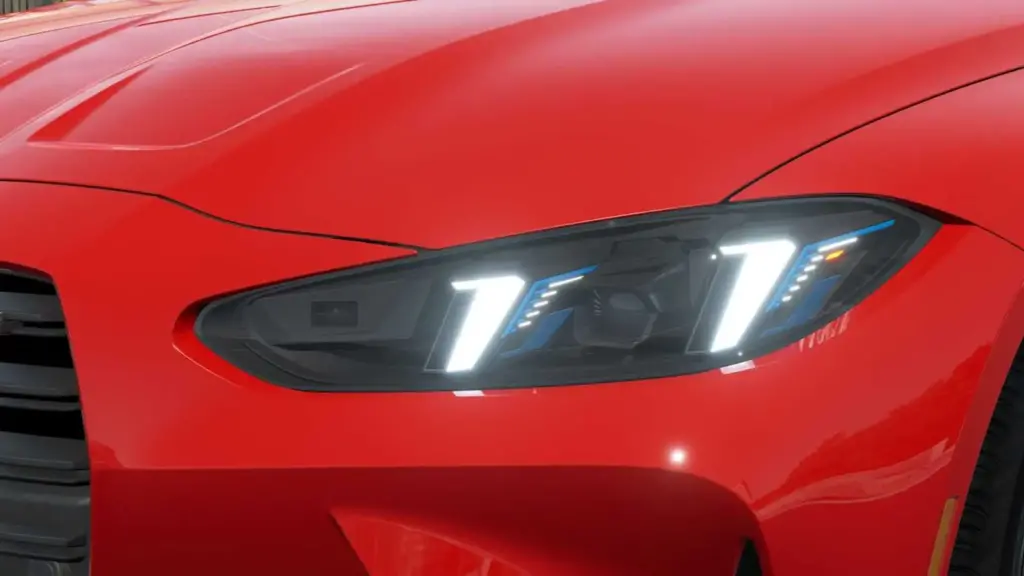
Key Takeaways
- The 2026 M3 offers three configurations: 473-hp manual RWD ($79,575), 503-hp automatic RWD ($82,600), and 523-hp automatic xDrive ($88,875) with 2.8-second 0-60 mph capability.
- Minimal changes for 2026 include standard heated steering wheel and remote start, likely marking the final year before 2027’s Neue Klasse platform brings electrification and redesign.
- Manual transmission availability exclusively on base model makes this potentially the last opportunity to purchase new six-speed M3s before transmission option disappears post-2027.
- Proper maintenance proves critical for S58 engine longevity—7,500-mile oil changes minimum, with 42% probability of major repair during first five years requiring budget consideration.
- Competition xDrive delivers best all-around capability with 523 hp and all-weather traction, while base manual offers maximum engagement for driving purists at lowest price.
- Pricing increased $1,700 across all trims for 2026, with fully-loaded models easily exceeding $110,000 once popular options like carbon-ceramic brakes and Individual paint are added.
- Strong resale values offset higher purchase prices, particularly for manual transmission models expected to achieve collectible status as they become increasingly rare in new car market.
FAQs About the 2026 BMW M3
Is the 2026 BMW M3 reliable?
The current G80 generation has proven generally reliable with proper maintenance. The S58 engine shows robust durability when serviced according to BMW’s schedules, though CarEdge data indicates a 42% probability of major repair during the first five years. Regular oil changes every 7,500 miles (or less for track use) prove essential for longevity[16][23].
What’s the difference between M3 base and Competition?
The base M3 produces 473 hp with exclusive six-speed manual transmission and softer suspension tuning for better ride quality. The Competition generates 503-523 hp (depending on drivetrain) with eight-speed automatic transmission only, firmer suspension, and standard Active M Differential. The Competition accelerates 0-60 mph in 3.4-3.8 seconds versus 4.1 seconds for the base manual[1][7].
Does the 2026 M3 come with a manual transmission?
Yes, the base M3 exclusively offers a six-speed manual transmission with rear-wheel drive. Competition models (both RWD and xDrive) come only with the eight-speed automatic transmission. The manual M3 starts at $79,575 and represents an increasingly rare offering as manufacturers shift toward automatics and electrification[1][6].
How much does a fully loaded 2026 BMW M3 cost?
A fully-loaded M3 Competition xDrive easily exceeds $110,000 with popular options. Starting MSRP of $88,875 plus carbon-ceramic brakes ($8,500), M Carbon Package ($10,000), Individual paint ($5,000), carbon bucket seats ($4,500), and other options quickly escalate pricing. Average transaction prices range $85,000-$100,000 depending on configuration[1][3].
Is the M3 Competition xDrive worth the extra money?
For buyers in winter climates or seeking maximum performance, yes. The xDrive system provides all-weather traction impossible with rear-drive models, while the additional 20 horsepower (523 total) delivers the quickest M3 acceleration ever: 2.8 seconds 0-60 mph tested by Car and Driver. The $6,275 premium over Competition RWD proves justified for year-round usability[1].
Should I buy the 2026 M3 or wait for the 2027 redesign?
Buy the 2026 model if you value manual transmissions (availability uncertain post-2027), prefer purely combustion powertrains, or want to avoid potential first-year issues with the all-new platform. Wait for 2027 if you prefer electric powertrains (700+ hp), want revolutionary new styling, or desire next-generation technology. The 2026 represents the last non-hybrid M3 generation[4][21].
What are common problems with the BMW M3?
Owner reports note occasional brake feel inconsistency, particularly with optional carbon-ceramic brakes. Some experience exhaust noise concerns during cold starts. The S58 engine requires strict maintenance adherence—skipping oil changes risks bearing and turbocharger damage. Carbon-ceramic brakes may require warm-up for optimal performance and feel less confident in wet conditions[8][16].
How does the M3 compare to the Mercedes-AMG C63?
The M3 offers traditional inline-six character and lighter weight (3,800 lbs vs 4,750 lbs), while the C63’s plug-in hybrid delivers more power (671 hp vs 523 hp). The M3 achieves quicker acceleration in real-world testing despite lower horsepower due to superior power-to-weight ratio. The M3 provides better handling dynamics and driving engagement, while the C63 offers more straight-line performance[17][18].
Is the 2026 M3 good for daily driving?
Yes, the M3 excels as a daily driver with comfortable seats, usable back seat, and practical 16.9-cubic-foot trunk. However, the ride remains firm even in Comfort mode due to performance-oriented suspension geometry. The base M3 offers the best ride quality in the lineup with softer suspension tuning compared to Competition variants. Fuel economy of 18-19 mpg combined proves reasonable for the performance level[1][7].
What is the fuel economy of the 2026 BMW M3?
EPA ratings are 16-17 mpg city, 23-24 mpg highway, and 18-19 mpg combined across all trim levels. Car and Driver’s real-world highway testing achieved 26-28 mpg at 75 mph—exceeding EPA estimates. With the 16.1-gallon fuel tank, expect approximately 300 miles range per fill-up during mixed driving, making the M3 viable for weekend road trips[1][2].
References
- Car and Driver. (2025). 2026 BMW M3 Review, Pricing, and Specs. https://www.caranddriver.com/bmw/m3-2026
- BMW Blog. (2025). 2026 BMW M3: What’s New, What’s Standard, What’s Worth It. https://www.bmwblog.com/2025/07/24/2026-bmw-m3-review-updates-performance-pricing/
- BMW Blog. (2025). New 2026 BMW M3 Configurator Adds Iconic Individual Colors. https://www.bmwblog.com/2025/07/22/2026-bmw-m3-individual-colors-configurator/
- Car and Driver. (2025). 2027 BMW M3: What We Know So Far. https://www.caranddriver.com/bmw/m3-2027
- Autoexpert. (2025). BMW M3 Competition Review and Buyer’s Guide. https://autoexpert.com.au/posts/bmw-m3-competition-review-buyers-guide-ultimate-sedan-supercar
- CarBuzz. (2025). BMW Reaffirms Its Commitment To The Manual, But It Will Become Rarer. https://carbuzz.com/bmw-says-manual-gearboxes-will-become-rarer/
- Edmunds. (2025). 2026 BMW M3 Prices, Reviews, and Pictures. https://www.edmunds.com/bmw/m3/2026/
- Kelley Blue Book. (2025). 2026 BMW M3 Consumer Reviews. https://www.kbb.com/bmw/m3/2026/consumer-reviews/
- BMW Blog. (2025). The 2026 BMW M3 Is Substantially More Expensive. https://www.bmwblog.com/2025/06/03/2026-bmw-m3-substantially-more-expensive/
- Edmunds. (2025). 2025 BMW M3: True Cost to Own. https://www.edmunds.com/bmw/m3/2025/cost-to-own/
- Road & Track. (2025). BMW Isn’t Ruling Out Future Manual Transmission M Cars. https://www.roadandtrack.com/news/a65204767/bmw-future-manual-transmission-m-cars-possible-exec-says/
- Driving.ca. (2025). 2026 BMW M3 Sedan vs 2026 Mercedes-Benz C-Class. https://driving.ca/car-comparisons/2026-bmw-m3-sedan-vs-2026-mercedes-benz-c-class/
- Driving.ca. (2025). 2026 BMW M3 Sedan vs 2026 Mercedes-Benz E-Class. https://driving.ca/car-comparisons/2026-bmw-m3-sedan-vs-2026-mercedes-benz-e-class/
- MarketWatch. (2025). The 2026 BMW M3: Both Thrilling and Functional, It’s a Driver’s Dream. https://www.marketwatch.com/story/the-2026-bmw-m3-both-thrilling-and-functional-its-a-drivers-dream-d615980a
- BMW Blog. (2019). BMW 3 Series Gets Superior Pedestrian Protection Rating from IIHS. https://www.bmwblog.com/2019/10/29/bmw-3-series-gets-superior-pedestrian-protection-rating-from-iihs/
- CarEdge. (2024). BMW M3 Maintenance Costs. https://caredge.com/bmw/m3/maintenance
- Find My Car. (2024). BMW M3 vs Mercedes-AMG C63: Battle of the Titans. https://www.findmycar.au/blog/bmw-m3-vs-mercedes-amg-c63-battle-of-the-titans
- BMW Blog. (2024). Weight vs. Horsepower: Why BMW’s M3 CS Beat Mercedes C63. https://www.bmwblog.com/2024/11/27/bmw-m3-cs-vs-mercedes-amg-c63-s-e-performance-u-drag-test/
- TrueCar. (2025). 2026 BMW M3 Review | Pricing, Trims & Photos. https://www.truecar.com/overview/bmw/m3/
- Carsguide. (2024). BMW M3 Problems & Reliability Issues. https://www.carsguide.com.au/bmw/m-models/m3/problems
- BMW Blog. (2025). BMW M CEO: New M3 Electric Won’t Get a Manual. https://www.bmwblog.com/2025/06/04/the-end-of-the-clutch-pedal-bmw-m3-electric-wont-get-a-manual/
- Reddit. (2025). Should I Keep My 2026 M3 Order or Cancel? Last Year Before Redesign. https://www.reddit.com/r/BMW/comments/1mrcd9e/should_i_keep_my_2026_m3_order_or_cancel_last/
- BimmerPost. (2024). BMW M3 G80 Cost of Ownership 6 Months Later. https://g80.bimmerpost.com/forums/showthread.php?t=1959939

I am a senior automotive analyst at Autvex. Expert vehicle evaluations, in-depth reviews, and objective analysis helping readers make informed automotive decisions with years of industry experience.

